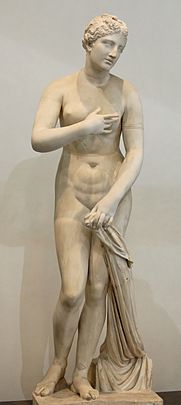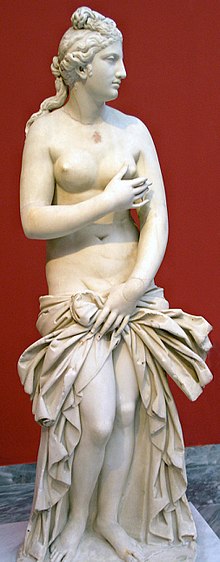
The Capitoline Venus is a type of statue of Venus, specifically one of several Venus Pudica (modest Venus) types (others include the Venus de' Medici type), of which several examples exist. The type ultimately derives from the Aphrodite of Cnidus. The Capitoline Venus and her variants are recognisable from the position of the arms—standing after a bath, Venus begins to cover her breasts with her right hand, and her groin with her left hand.
Contents
This original of this type (from which the following copies derive) is thought to be a lost 3rd- or 2nd-century BCE variation on Praxiteles' work from Asia Minor, which modifies the Praxitelean tradition by a carnal and voluptuous treatment of the subject and the goddess's modest gesture with both hands—rather than only one over the groin, in Praxiteles's original.



